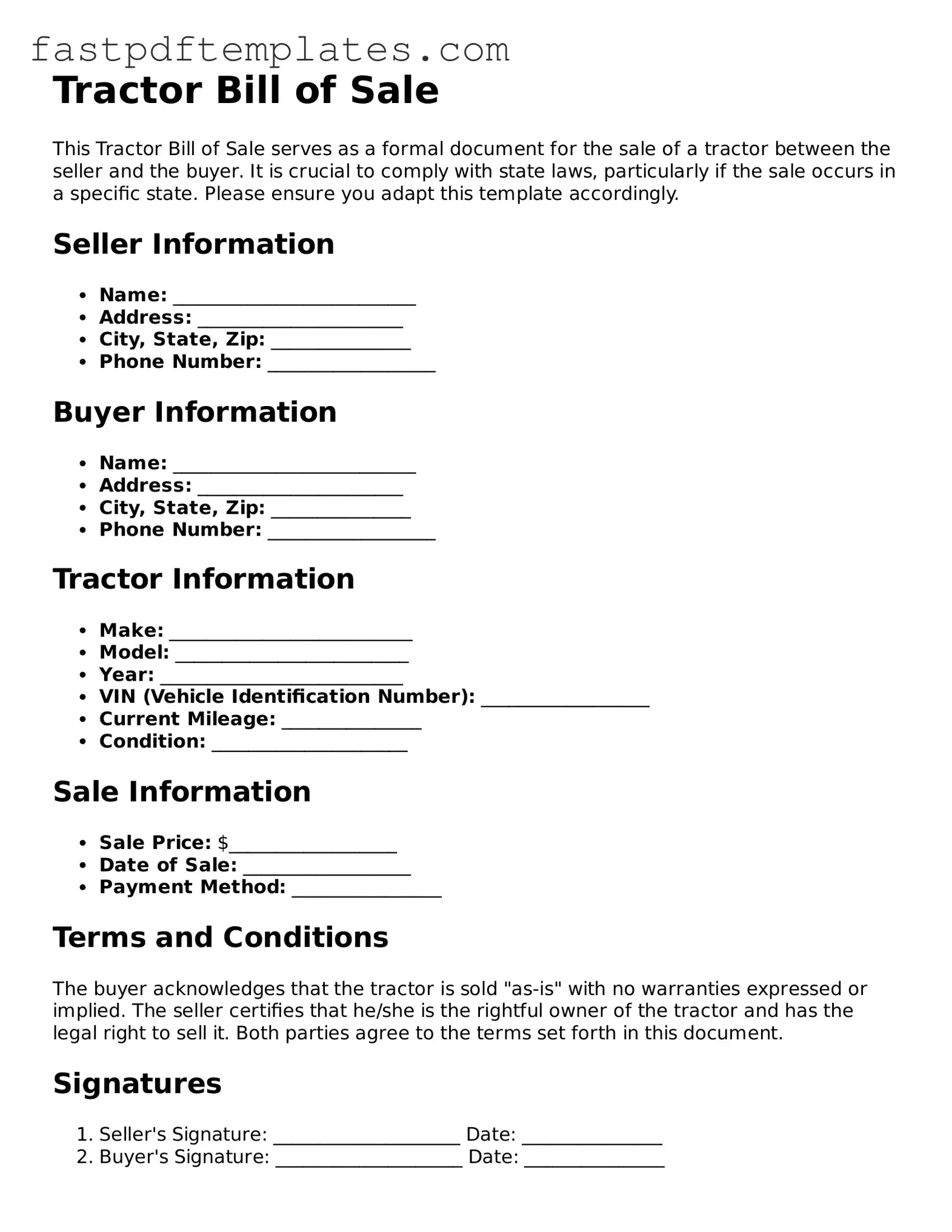Tractor Bill of Sale
This Tractor Bill of Sale serves as a formal document for the sale of a tractor between the seller and the buyer. It is crucial to comply with state laws, particularly if the sale occurs in a specific state. Please ensure you adapt this template accordingly.
Seller Information
- Name: __________________________
- Address: ______________________
- City, State, Zip: _______________
- Phone Number: __________________
Buyer Information
- Name: __________________________
- Address: ______________________
- City, State, Zip: _______________
- Phone Number: __________________
Tractor Information
- Make: __________________________
- Model: _________________________
- Year: __________________________
- VIN (Vehicle Identification Number): __________________
- Current Mileage: _______________
- Condition: _____________________
Sale Information
- Sale Price: $__________________
- Date of Sale: __________________
- Payment Method: ________________
Terms and Conditions
The buyer acknowledges that the tractor is sold "as-is" with no warranties expressed or implied. The seller certifies that he/she is the rightful owner of the tractor and has the legal right to sell it. Both parties agree to the terms set forth in this document.
Signatures
- Seller's Signature: ____________________ Date: _______________
- Buyer's Signature: ____________________ Date: _______________
For sales that occur in specific states, it is recommended to consult local laws relating to the transfer of ownership and registration requirements.
